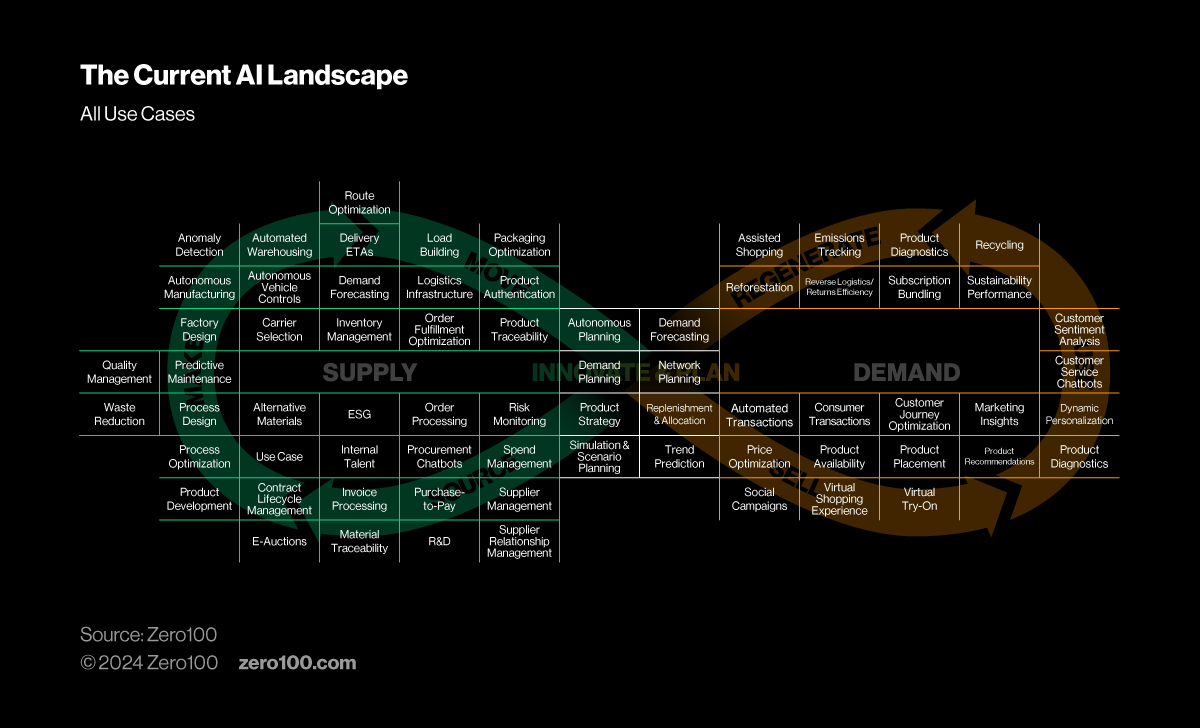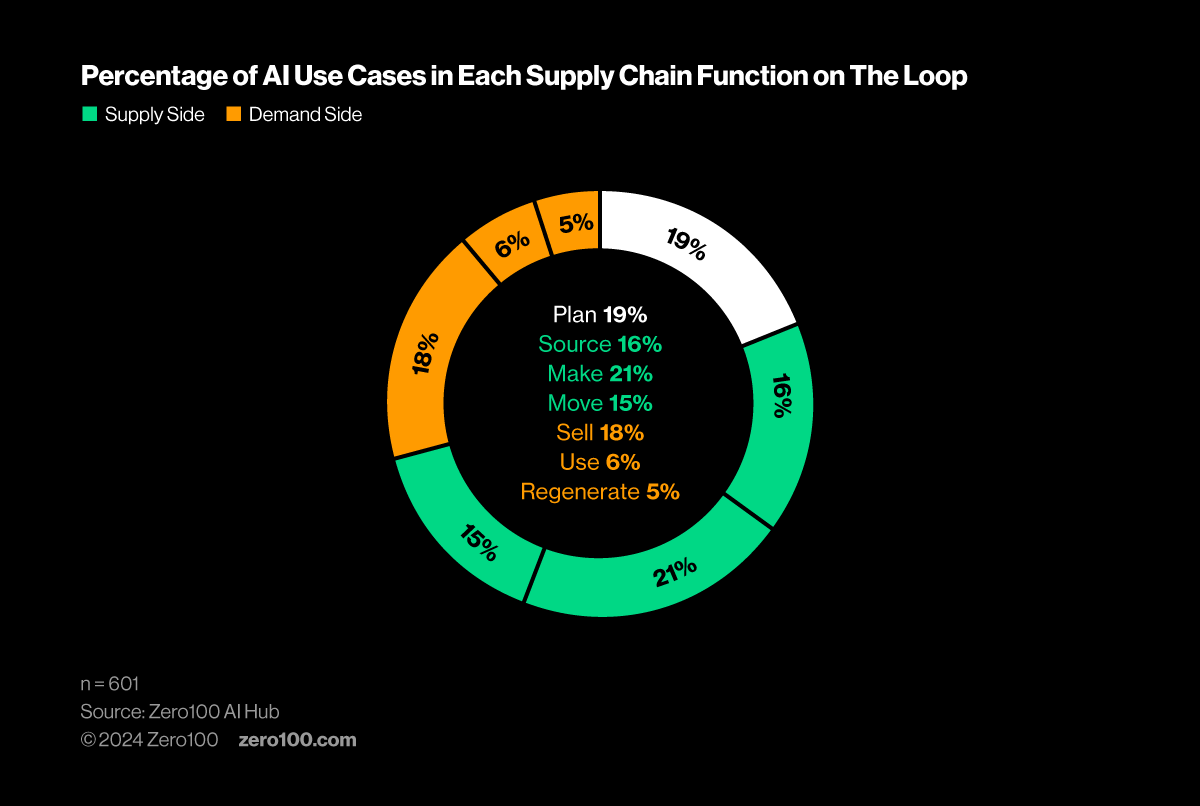

Inside The AI Hub: 600+ Supply Chain Use Cases Delivering Real Value
Zero100 analysis found that, across 100 global companies, the top quartile of AI performers grew revenue nearly twice as fast as the bottom quartile group – and did so at +2.88% higher gross profit. Our AI Hub contains 600+ examples of brands scaling implementations throughout their operations. Here are some of the places where companies are experimenting and unlocking value.
Zero100 has developed the first nearly comprehensive library of AI use cases in supply chain. Called The AI Hub, it is organized by function, type of AI, measured results, and other filters. At present, it contains 600+ case studies across more than 75 unique supply chain use cases.
Key Takeaways
-
1
Our analysis of live AI implementations found that AI innovation is most prevalent in the Make and Plan phases (21% and 19% of use cases, respectively) of The Loop.
-
2
40% of cost-cutting AI initiatives take place in the Source phase, where implementations like purchasing and contract lifecycle management can lead to cost efficiencies.
A recent Zero100 analysis discovered that, across 100 global companies, the top quartile of AI performers grew revenue nearly twice as fast as the bottom quartile group… and did so at +2.88% higher gross profit. With this in mind, we spent the last year identifying 600+ AI use cases, pulling them together into a library, which we call The AI Hub, and developing an AI Blueprinting exercise – all with the aim of helping organizations cut through the noise and focus efforts and investments on the highest-value initiatives.
At Zero100 we describe end-to-end supply chains functions in our Loop framework: Plan, Source, Make, Move, Sell, Use, and Regenerate.
Using The Loop as a map, we categorized AI implementations into more than 75 distinct applications, such as demand forecasting, order fulfillment optimization, and price optimization, across operations. This gives us a high-level view of how AI is integrated in end-to-end supply chains and provides a closer look at the top cases generating ROI.

Supply chain organizations have made the most progress in Make and Plan, with a lot of room for upside in Use and Regenerate. Zero100’s Lauren Acoba predicts innovation in Source will be the big push for organizations this year, where implementations like Walmart’s AI-driven supplier contract negotiation can yield big dividends.

We filtered the use cases in line with supply chain priorities, like efficiency or cost, and found that most efficiency-focused cases – 22% – are in Move. Meanwhile, 40% of cost-related use cases live in Source. This highlights areas ripe for investigation based on where others with common priorities are finding the most value.
Here are just a few cases from our AI Hub:
Unilever: Plan
In April 2022, Unilever announced that they were building their own digital tool leveraging machine learning. The tool considers data like profitability, consumer purchase habits, and retailer benefits as the company performs SKU rationalization to optimize production levels and on-shelf availability for products. This new opportunity has delivered Unilever gains in time, cost, and capacity while influencing decisions on their de-list, watch, protect, and grow strategies.
Shell: Source
Shell went through a transformation to digitize and automate their S2C (Source-to-Contract) and E2E (End-to-End) processes. For contract authoring, they can now measure 50 key data points in their system and 4,000 clause elements to create a draft contract for suppliers to bid on. Then, after deals are closed and executed, robotic process automation automatically integrates important information into Shell's ERP system, reducing cycle time by 25%.
Supply chain professionals can drive true value and real change across organizations, and to do so they need a full view of the possibilities for operations. If you’re interested in diving deeper into your own AI maturity, seeing how you compare to your peers, discovering untapped opportunities, and unlocking high-value capabilities, consider taking part in our AI Blueprinting exercise.
Please reach out to your Zero100 Engagement Director if you’d like more information about The AI Hub or our AI Blueprinting exercise.
To see a different data cut or to dig deeper into this topic, reach out to our Head of Research Analytics, Cody Stack, at Cody.Stack@zero100.com.
Methodology
Zero100’s proprietary data and analytics are a combined effort between our data scientists and research analysts. We provide data-first insights matched with our own research-backed points of view and bring this analysis to life via real-world case examples being led by supply chain practitioners today.
For this study, we analyzed 542 supply chain organizations by looking at publicly available mentions of AI usage with supply chain-specific term trees.